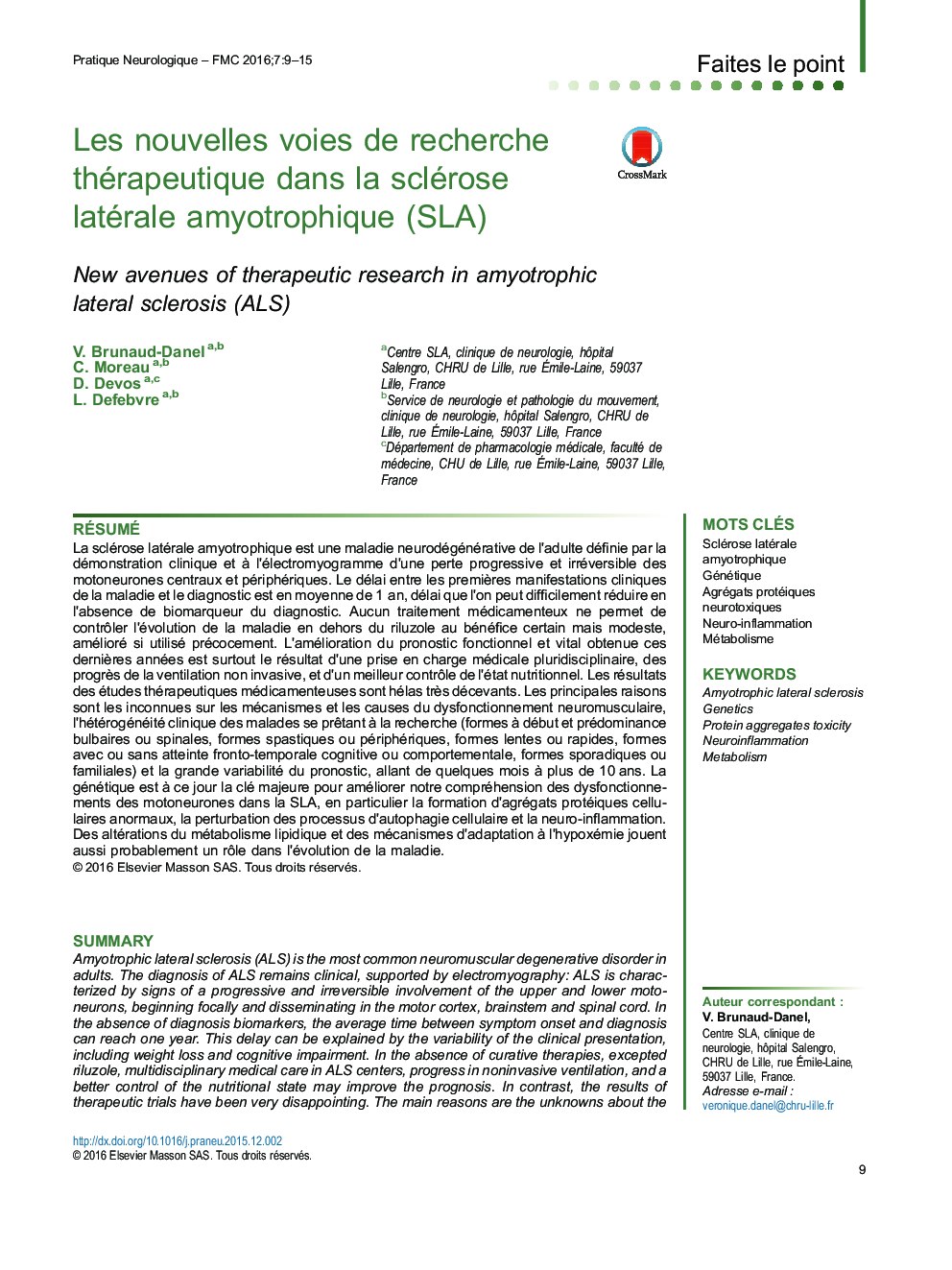| Article ID | Journal | Published Year | Pages | File Type |
|---|---|---|---|---|
| 3087064 | Pratique Neurologique - FMC | 2016 | 7 Pages |
Abstract
Amyotrophic lateral sclerosis (ALS) is the most common neuromuscular degenerative disorder in adults. The diagnosis of ALS remains clinical, supported by electromyography: ALS is characterized by signs of a progressive and irreversible involvement of the upper and lower motoneurons, beginning focally and disseminating in the motor cortex, brainstem and spinal cord. In the absence of diagnosis biomarkers, the average time between symptom onset and diagnosis can reach one year. This delay can be explained by the variability of the clinical presentation, including weight loss and cognitive impairment. In the absence of curative therapies, excepted riluzole, multidisciplinary medical care in ALS centers, progress in noninvasive ventilation, and a better control of the nutritional state may improve the prognosis. In contrast, the results of therapeutic trials have been very disappointing. The main reasons are the unknowns about the mechanisms of the neuromuscular dysfunction and the heterogeneity of ALS phenotypes. Recent advances in genetics suggest that the pathophysiological mechanisms underlying the loss of the motoneurons are probably multifactorial in each case. Better knowledge about genetic factors suggest an important role for dysregulation of RNA metabolism, neurotoxicity of the proteinopathy and abnormal protein aggregations, alterations of autophagy, and non-neuronal cells, specially neuroinflammation. Neurodegeneration is not the single event in ALS: defects in lipid metabolism and alterations of the neuronal response to hypoxia may be critical to ALS progression. These are new ways to identify potential therapeutic targets.
Keywords
Related Topics
Life Sciences
Neuroscience
Neurology
Authors
V. Brunaud-Danel, C. Moreau, D. Devos, L. Defebvre,
